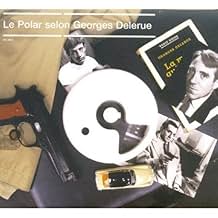A husband tries to kill his wife using the plan he saw in a film. But real life is not a film.A husband tries to kill his wife using the plan he saw in a film. But real life is not a film.A husband tries to kill his wife using the plan he saw in a film. But real life is not a film.
Storyline
Did you know
- ConnectionsReferenced in Les échos du cinéma: Episode #1.21 (1961)
Featured review
Beautiful actresses and handsome men in sumptuous sets and costumes act out four tales of lust, treachery and murder – one in quattrocento Venice drawn from Stendhal and the other three in Paris in the 1880s, 1913 and 1961. All in a frame story which morphs into the fourth episode, recounted tensely in almost real time. Some good writing evident, particularly in the third episode from the celebrated pair of Boileau and Narcejac to whom we owe both "Diaboliques" and "Vertigo", and classical acting in delivery and posture. The second episode in the 1880s, based on a real life case, is given an extra illusion of authenticity with spoof caricatures echoing those in newspapers of the time.
The picture as a whole exhibits intelligent construction, technical flair, and an adult view of the world, centred strongly on the desirable but manipulative women around whom the men revolve. There is even very brief profanity and nudity. All very different from the direction Oury took in his next highly enjoyable but undemanding films, aimed successfully at general audiences. In this work there is little explicit humour, apart from a fun cameo by Louis de Funès, whose efforts at talking English make him unintelligible, and some nice moments from Danielle Darrieux being charmingly drunk. It also features an English officer, here played by Richard Todd whose French is accented but excellent, an idea Oury used again with Terry-Thomas in "La Grande Vadrouille" and David Niven in "Le Cerveau".
Apart from the usual anachronism that in the three historical episodes hairstyles and make-up remain all too close to 1962, no complaints about a film which really ought to raise Oury's critical reputation posthumously.
The picture as a whole exhibits intelligent construction, technical flair, and an adult view of the world, centred strongly on the desirable but manipulative women around whom the men revolve. There is even very brief profanity and nudity. All very different from the direction Oury took in his next highly enjoyable but undemanding films, aimed successfully at general audiences. In this work there is little explicit humour, apart from a fun cameo by Louis de Funès, whose efforts at talking English make him unintelligible, and some nice moments from Danielle Darrieux being charmingly drunk. It also features an English officer, here played by Richard Todd whose French is accented but excellent, an idea Oury used again with Terry-Thomas in "La Grande Vadrouille" and David Niven in "Le Cerveau".
Apart from the usual anachronism that in the three historical episodes hairstyles and make-up remain all too close to 1962, no complaints about a film which really ought to raise Oury's critical reputation posthumously.
Details
- Release date
- Countries of origin
- Language
- Also known as
- Ubistvo se ne isplati
- Production companies
- See more company credits at IMDbPro
- Runtime2 hours 39 minutes
- Color
- Sound mix
- Aspect ratio
- 2.35 : 1
Contribute to this page
Suggest an edit or add missing content



































